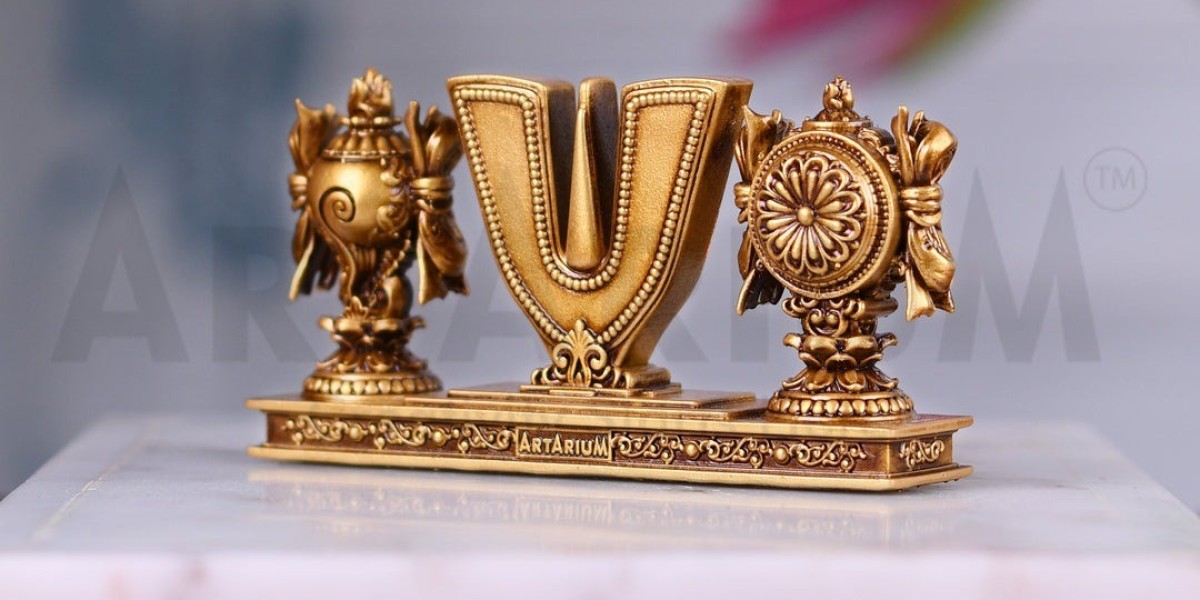In the realm of spirituality, symbols hold profound meanings, often transcending their physical forms to represent deeper truths. One such emblem is the Hare Krishna Tilak, an intricate mark adorning the foreheads of devout followers of the Hare Krishna movement. Delving into the history, symbolism, and spiritual significance of this sacred tradition unveils a rich tapestry of beliefs and practices that have endured through centuries. Join us on a journey to uncover the essence of the Hare Krishna Tilak and its role in the lives of millions worldwide.
Origins and Symbolism:
The origins of the Hare Krishna Tilak trace back to ancient Vedic scriptures, where it finds mention as an emblem of devotion and spiritual connection. Derived from Sanskrit, "Tilak" signifies a mark or sign, while "Hare Krishna" refers to the mantra revered by followers of the Vaishnavite tradition. This distinctive symbol, typically composed of bright colors such as red, yellow, and white, is meticulously applied on the forehead, representing various aspects of the divine.
Within the intricate patterns of the Tilak lies a profound symbolism. The central dot, often representing the soul or the divine, is encircled by intricate designs denoting different facets of spiritual understanding. Each stroke holds significance, conveying messages of surrender, reverence, and inner awakening. As devotees adorn themselves with this sacred emblem, they invoke a deeper connection with their spiritual path and the divine energies that govern the universe.
Cultural and Social Significance:
Beyond its spiritual connotations, the Hare Krishna Tilak carries immense cultural and social significance within the community. It serves as a visible marker of one's faith, signaling allegiance to the teachings of Lord Krishna and the spiritual lineage of Vaishnavism. In congregational settings, the Tilak unites individuals under a common banner of devotion, fostering a sense of belonging and camaraderie among devotees.
Moreover, the Tilak acts as a potent symbol of identity, distinguishing followers of the Hare Krishna movement from other spiritual traditions. Its presence not only evokes reverence but also invites inquiry, prompting discussions on faith, philosophy, and the path to spiritual realization. As such, the Tilak becomes a catalyst for dialogue and understanding, bridging cultural divides and fostering interfaith harmony.
Spiritual Practice and Rituals:
The application of the Hare Krishna Tilak is not merely a symbolic gesture but an integral part of spiritual practice and rituals within the tradition. Devotees meticulously prepare the Tilak paste using natural ingredients such as sandalwood, turmeric, and vermilion, infusing each batch with prayers and blessings. The act of applying the Tilak involves precise movements, often accompanied by chanting mantras and invoking divine grace.
For practitioners, adorning the Tilak marks the commencement of sacred rituals and devotional activities. It serves as a reminder of their spiritual vows and the ultimate goal of attaining union with the divine. Whether attending temple ceremonies, participating in congregational chanting, or engaging in personal meditation, the presence of the Tilak acts as a constant reminder of one's spiritual journey and the divine presence dwelling within.
Contemporary Relevance and Global Outreach:
Despite its ancient roots, the Hare Krishna Tilak remains remarkably relevant in contemporary society, transcending geographical boundaries to reach diverse communities worldwide. Through the efforts of dedicated practitioners and outreach programs, the teachings of Krishna consciousness have proliferated across continents, capturing the hearts and minds of seekers seeking solace and spiritual fulfillment.
In an era marked by rapid change and technological advancement, the timeless wisdom encapsulated in the Hare Krishna Tilak offers a sanctuary of peace and authenticity. Its presence amidst the hustle and bustle of modern life serves as a beacon of hope, inspiring individuals to seek higher truths and live with purpose and compassion. As the Hare Krishna movement continues to expand its reach, the Tilak stands as a symbol of unity, inviting all to embrace the path of devotion and spiritual awakening.
Conclusion:
In conclusion, the Hare Krishna Tilak represents more than just a decorative mark; it encapsulates centuries of spiritual wisdom, cultural heritage, and divine connection. As we unravel its mysteries and delve into its significance, we embark on a journey of self-discovery and transcendence, guided by the eternal principles of devotion and love. We invite you, dear readers, to share your thoughts and experiences with the Hare Krishna Tilak. How has this sacred tradition impacted your spiritual journey? Feel free to leave a comment below and join the conversation. May the blessings of Lord Krishna be upon us all.








